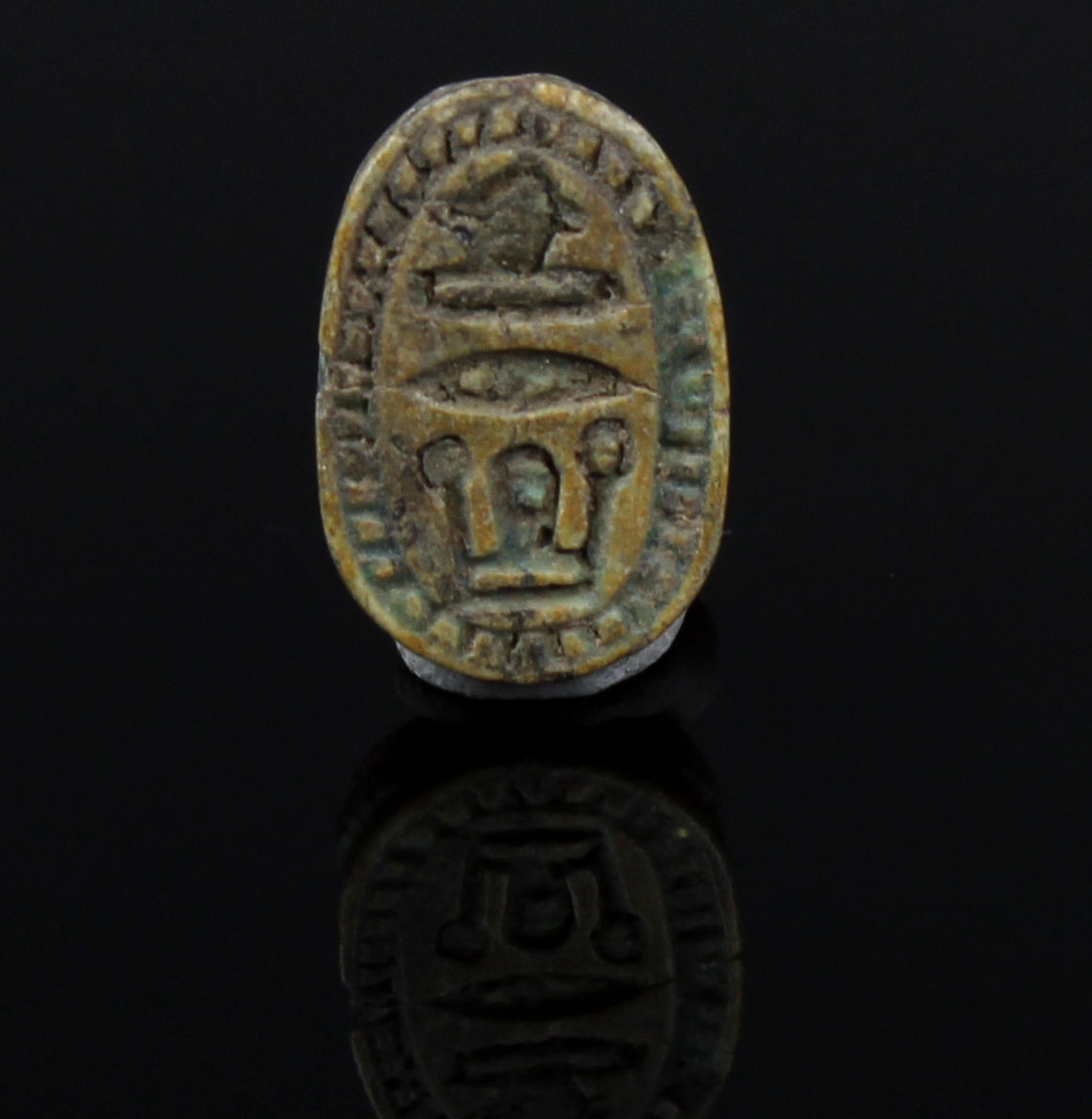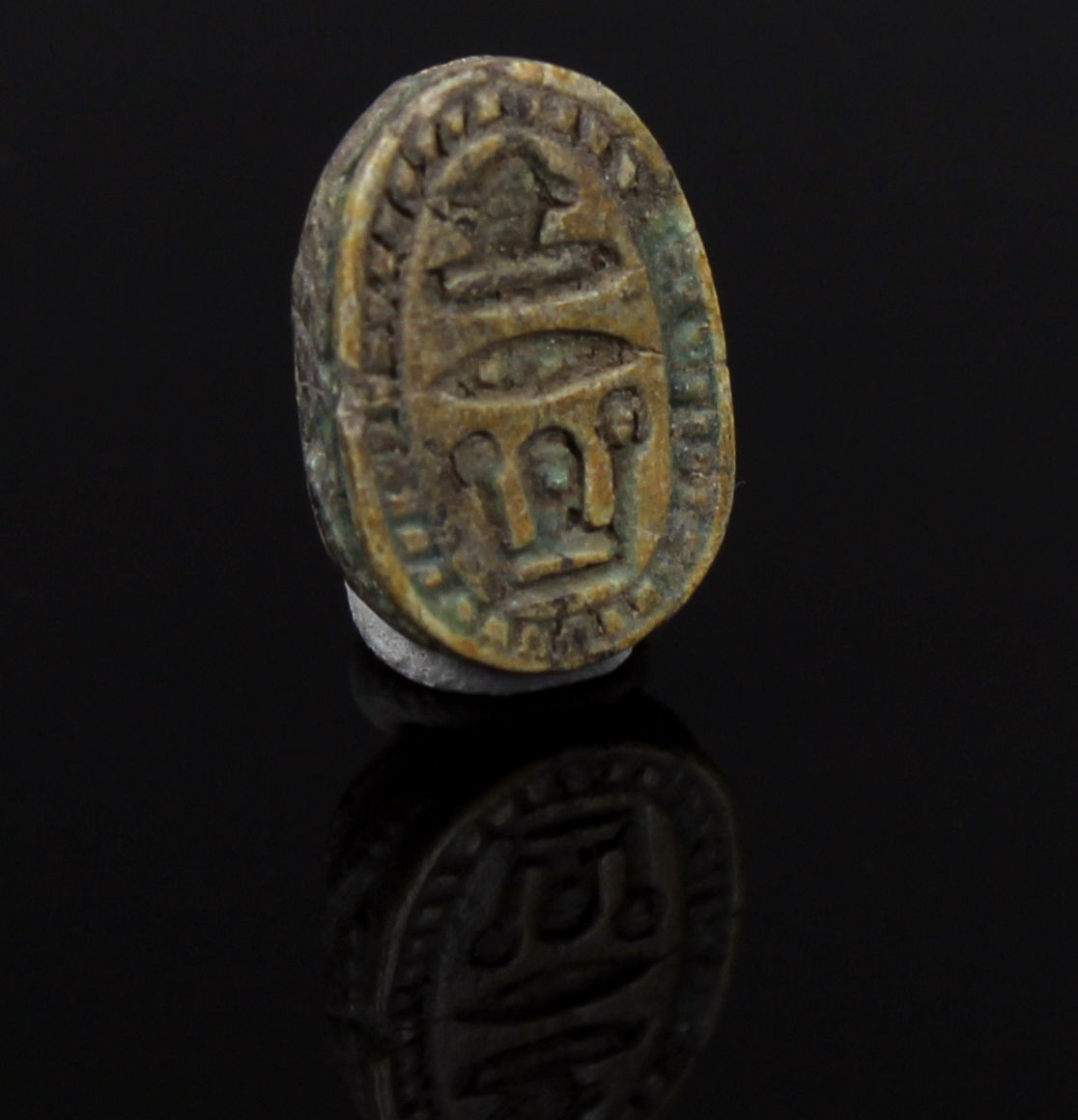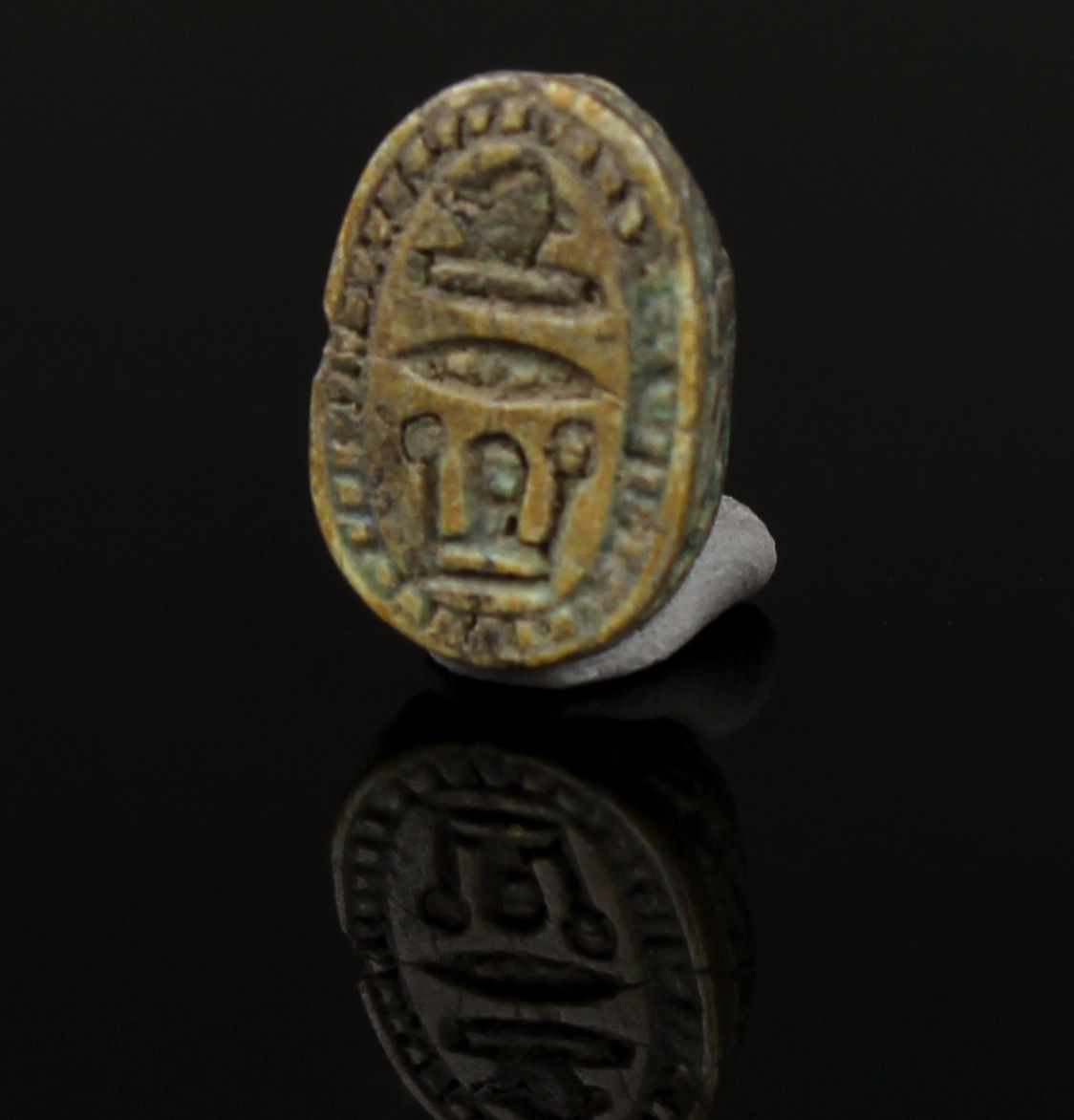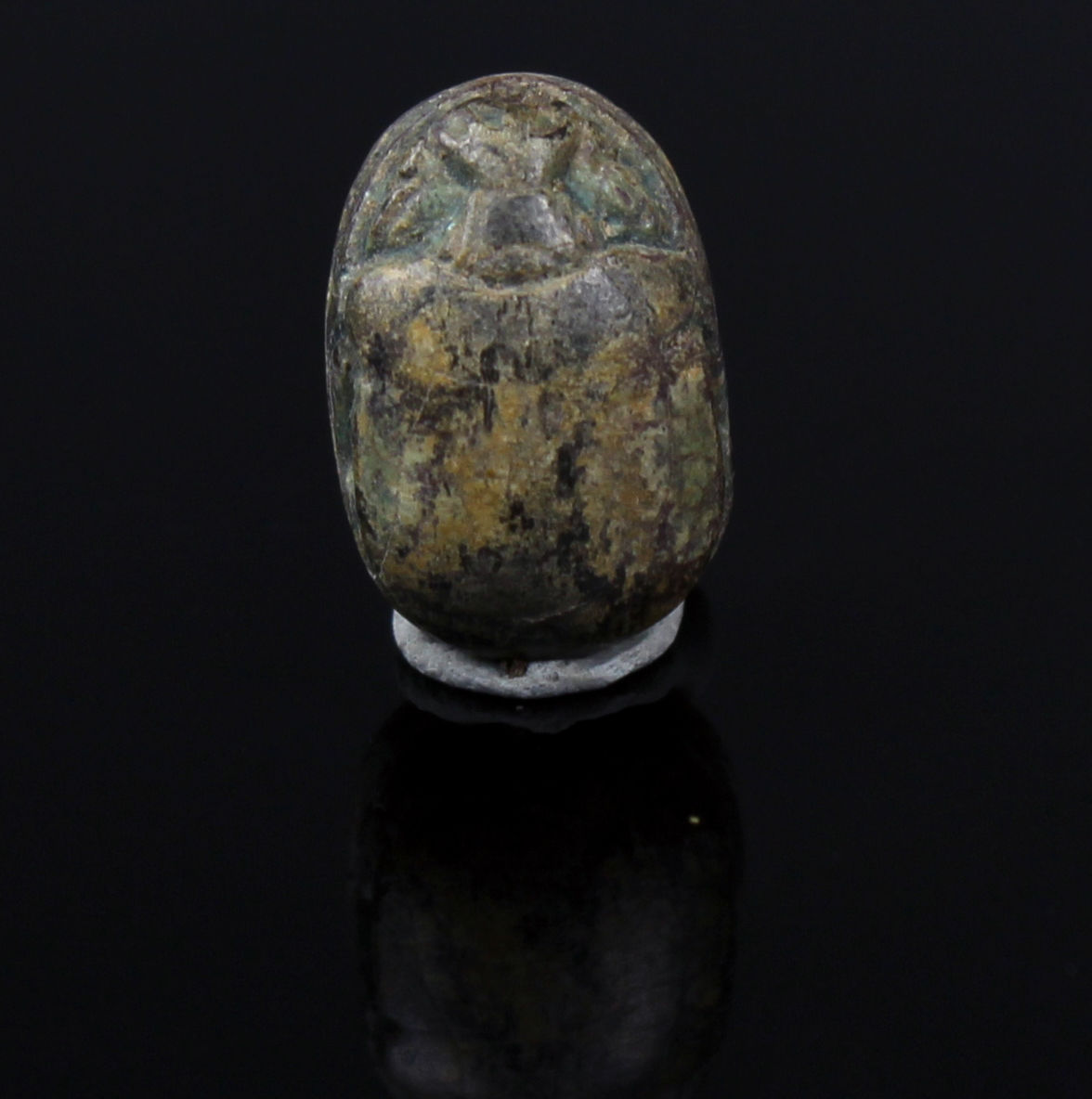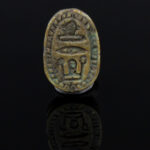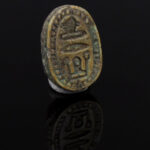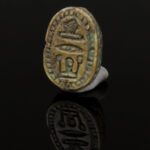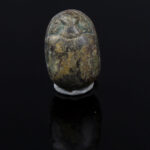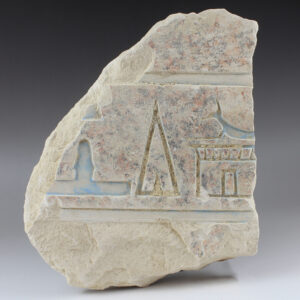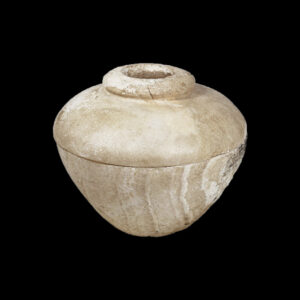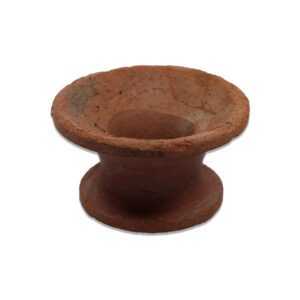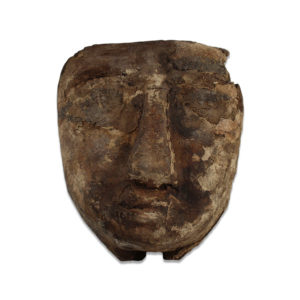Description
| ITEM | Scarab |
| MATERIAL | Glazed steatite |
| CULTURE | Egyptian |
| PERIOD | Second Intermediate Period, 1700 – 1550 B.C |
| DIMENSIONS | 14 mm x 8 mm |
| CONDITION | Good condition |
| PROVENANCE | Ex American egyptologist collection, active in the early part of the 20th century, brought to the US with the family in 1954. |
During the Second Intermediate Period of ancient Egypt (circa 1650–1550 BCE), scarabs carved from steatite emerged as significant artifacts reflecting the cultural, religious, and political landscape of the time. Steatite, also known as soapstone, was a commonly used material for crafting scarabs due to its softness, making it easier to carve intricate designs and inscriptions. These scarabs played various roles, serving as amulets, seals, and commemorative items, while also providing valuable insights into the beliefs and practices of ancient Egyptians during this tumultuous period.
Scarabs from the Second Intermediate Period often depicted traditional motifs such as the scarab beetle itself, symbolic of rebirth and regeneration, as well as other religious symbols like the ankh (symbol of life) and the djed pillar (symbol of stability and resurrection). Inscriptions on these scarabs frequently included the names and titles of rulers, officials, or deities, along with prayers, blessings, or magical spells intended to invoke divine protection or favor. These inscriptions not only served practical purposes, such as sealing documents or containers, but also conveyed important religious and political messages.
The Second Intermediate Period was marked by political instability and foreign invasions, particularly by the Hyksos, a group of Asiatic people who established their rule in the Nile Delta region. Scarabs from this period reflect the complex interactions between native Egyptian traditions and the cultural influences of foreign rulers. Some scarabs may bear inscriptions or iconography associated with Hyksos kings, while others may feature traditional Egyptian motifs alongside symbols of foreign origin.


